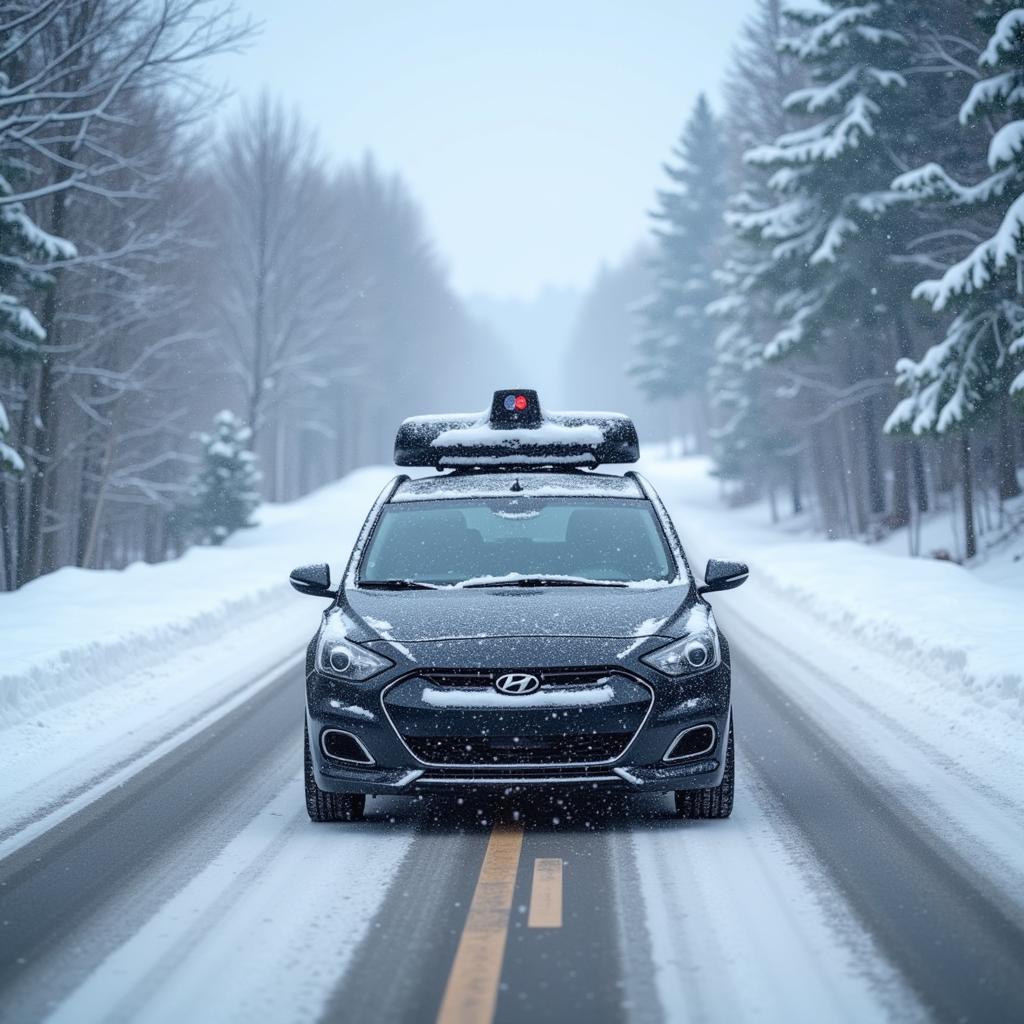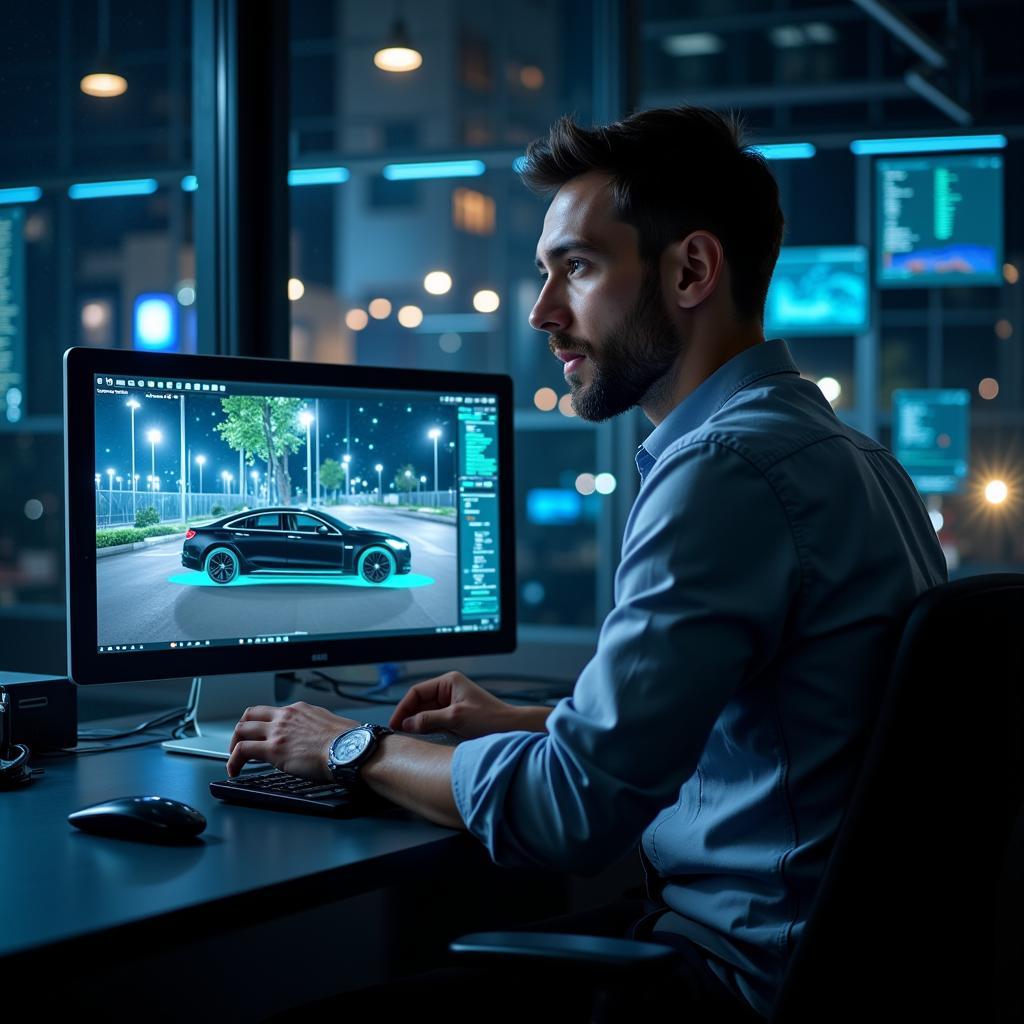Image detection is crucial for autonomous cars, enabling them to perceive and navigate the world. However, current image detection systems face various challenges that can compromise safety and reliability. These problems range from environmental factors to limitations in the algorithms themselves, and understanding them is key to developing more robust and dependable self-driving technology.
Common Image Detection Problems and Solutions
Several factors can throw a wrench in the works of autonomous vehicle image detection systems. Let’s delve into the most common issues:
Adverse Weather Conditions
Rain, snow, fog, and even bright sunlight can significantly impair image quality, making it difficult for the system to accurately identify objects. Think of how hard it is for you to see clearly when driving in a downpour! These conditions introduce noise and reduce visibility, leading to misinterpretations of the surrounding environment.
- Solution: Sensor fusion, combining data from cameras with other sensors like LiDAR and radar, can help mitigate the impact of adverse weather. Advanced algorithms trained on diverse datasets of challenging weather scenarios are also essential.
 Adverse Weather Affecting Autonomous Car Image Detection
Adverse Weather Affecting Autonomous Car Image Detection
Object Occlusion and Camouflage
When objects are partially hidden or blend in with their surroundings, it becomes difficult for the image detection system to recognize them. Imagine a pedestrian obscured by a parked car or a cyclist wearing clothing that camouflages them against the background.
- Solution: Predictive algorithms can anticipate the trajectory of partially occluded objects based on their visible portions. Improving the training datasets with a wider range of occlusion scenarios can also enhance the system’s ability to handle these situations.
Sensor Limitations and Calibration Errors
Cameras, like any other sensor, have limitations in their resolution and range. Incorrect calibration can further exacerbate these limitations, leading to distorted or inaccurate images.
- Solution: Regular sensor calibration is crucial to maintain accuracy. Utilizing high-resolution cameras and exploring new sensor technologies can also improve the quality of the input data.
Image Detection Problems: Understanding the Impact on Autonomous Driving
Image detection problems aren’t just technical glitches; they have a direct impact on the safety and functionality of autonomous vehicles. Here’s how:
Safety Concerns
Misinterpretations of the environment due to image detection problems can lead to dangerous situations, such as failing to recognize pedestrians or misjudging distances.
- Solution: Redundancy in sensor systems and fail-safe mechanisms are vital for ensuring safety. Thorough testing and validation in diverse real-world scenarios are also critical.
 Autonomous Car Navigating Busy Intersection with Pedestrians
Autonomous Car Navigating Busy Intersection with Pedestrians
Navigation and Decision-Making
Accurate image detection is essential for the vehicle to make informed decisions about navigation and path planning. Errors in image interpretation can lead to inefficient routing or even getting lost.
- Solution: Integrating image detection data with high-precision mapping and localization technologies can improve navigation accuracy.
The Role of Machine Learning in Addressing Image Detection Problems
Machine learning algorithms are at the heart of image detection systems in autonomous cars. These algorithms learn to identify objects and patterns from vast amounts of data.
- Solution: Continuously refining and retraining these algorithms with new and diverse data is crucial for improving their accuracy and robustness.
Conclusion
Image detection problems pose significant challenges to the widespread adoption of autonomous cars. Addressing these challenges requires a multi-pronged approach, from improving sensor technology and algorithms to robust testing and validation. By overcoming these hurdles, we can pave the way for safer and more reliable autonomous driving. Connect with us at AutoTipPro for expert assistance with your automotive needs. Our phone number is +1 (641) 206-8880 and our office is located at 500 N St Mary’s St, San Antonio, TX 78205, United States.
 Engineer Working on Autonomous Car Image Detection System
Engineer Working on Autonomous Car Image Detection System
“Robust image detection is not just about seeing; it’s about understanding the environment,” says Dr. Anya Sharma, a leading expert in computer vision.
“The key to overcoming image detection challenges lies in combining advanced algorithms with diverse and comprehensive training data,” adds Dr. David Chen, a renowned researcher in autonomous driving technology.
 Autonomous Car Test Track with Various Obstacles
Autonomous Car Test Track with Various Obstacles
“Real-world testing is crucial for validating the performance of image detection systems and ensuring their reliability in complex scenarios,” emphasizes Dr. Emily Carter, a specialist in automotive safety systems.




Leave a Reply